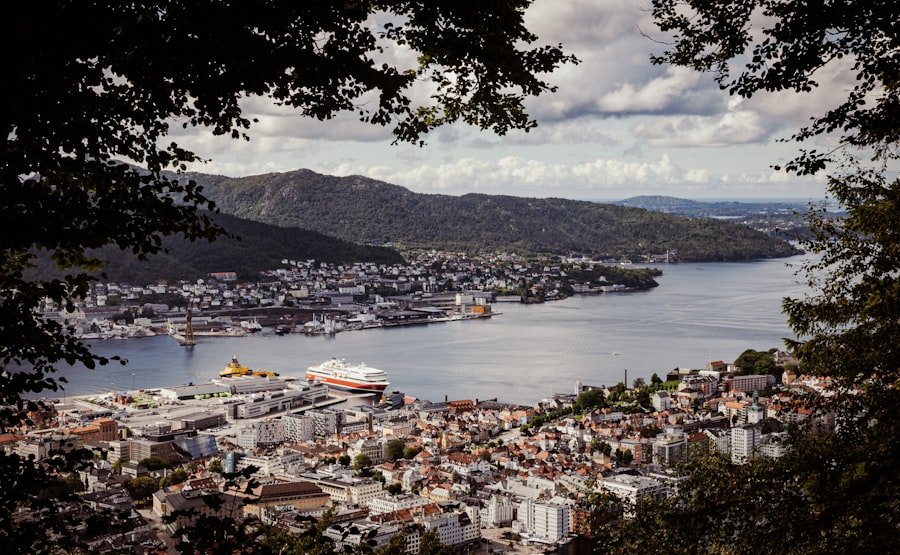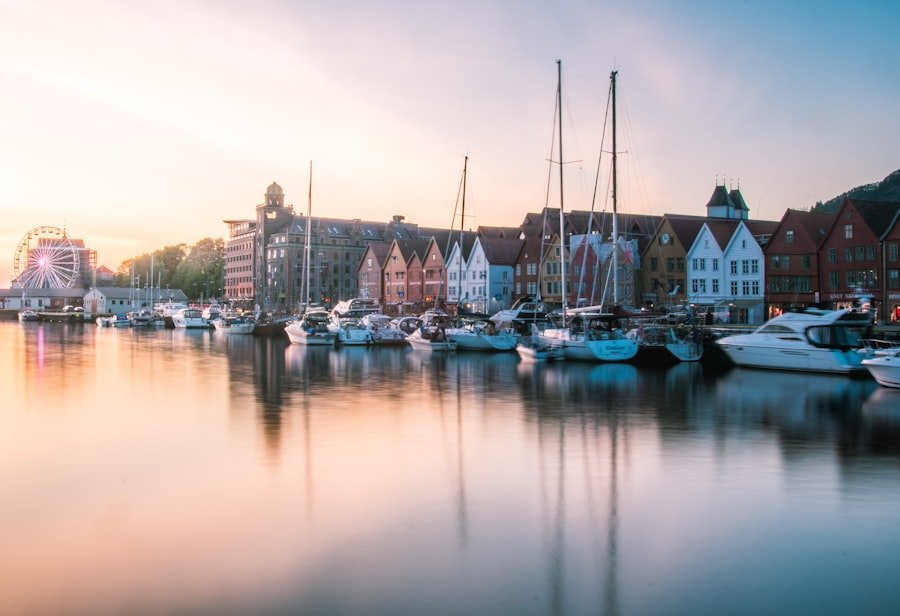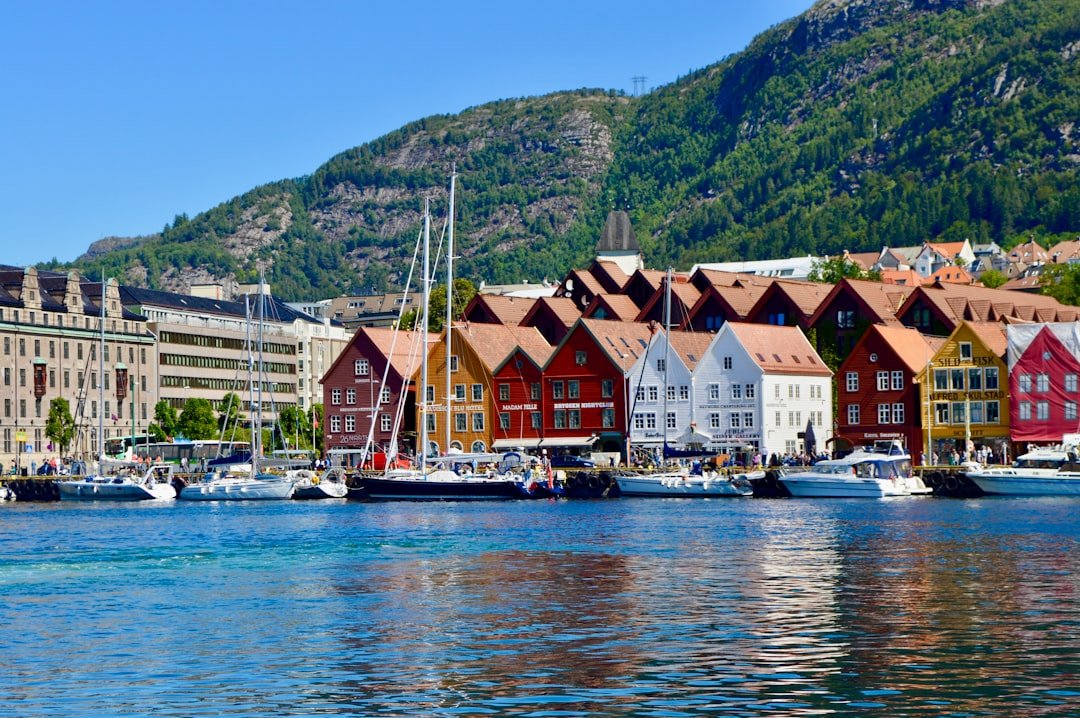Traffic management in Norwegian kommunes is a critical aspect of urban planning and public safety. As Norway continues to develop and modernise its infrastructure, the need for effective traffic management systems becomes increasingly paramount. The kommunes, or municipalities, play a vital role in ensuring that road networks are not only efficient but also safe for all users, including pedestrians, cyclists, and motorists.
With the growing population and increasing vehicle ownership, the challenges associated with traffic management are evolving, necessitating innovative solutions and collaborative efforts. In Norway, traffic management encompasses a wide range of activities, from the design and maintenance of roadways to the implementation of traffic regulations and the promotion of sustainable transport options. The integration of these elements is essential for creating a cohesive transport system that meets the needs of the community while minimising environmental impact.
As we delve deeper into the various facets of traffic management within Norwegian kommunes, it becomes evident that a multifaceted approach is required to address the complexities of modern transportation. Feeling overwhelmed by your move to Norway? Get personalized expert advice by booking a one-on-one session with our relocation specialists.
Summary
- Traffic management in Norwegian Kommunes is essential for ensuring road safety and efficient transportation.
- The Kommune plays a crucial role in road maintenance, including snow clearance, road repairs, and signage.
- The Norwegian Public Roads Administration is responsible for the planning, construction, and operation of the national and county road networks.
- Cooperation between Kommunes and the Public Roads Administration is vital for effective road maintenance and management.
- Funding and budgeting for road maintenance in Norwegian Kommunes require careful planning and allocation of resources.
The Role of the Kommune in Road Maintenance
The kommune is fundamentally responsible for the maintenance and upkeep of local roads, ensuring that they remain safe and accessible for all users. This responsibility includes regular inspections, repairs, and upgrades to existing infrastructure. The maintenance of roads is not merely a matter of aesthetics; it directly impacts public safety and the overall quality of life for residents.
Well-maintained roads facilitate smoother traffic flow, reduce the risk of accidents, and contribute to the economic vitality of the area. Moreover, the kommune must also consider the diverse needs of its population when planning road maintenance. This includes accommodating various modes of transport, such as bicycles and public transit, alongside private vehicles.
By prioritising inclusivity in road maintenance strategies, kommunes can foster a more sustainable transport environment that encourages active travel and reduces reliance on cars. This holistic approach not only enhances road safety but also promotes healthier lifestyles among residents.
Understanding the Responsibilities of the Norwegian Public Roads Administration

The Norwegian Public Roads Administration (Statens vegvesen) plays a pivotal role in overseeing the national road network and ensuring that it meets safety and quality standards. While kommunes manage local roads, the Public Roads Administration is responsible for major highways and trunk roads that connect different regions of the country. This division of responsibilities allows for a more streamlined approach to road management, with each entity focusing on its specific jurisdiction.
In addition to maintaining national roads, the Public Roads Administration is also tasked with developing policies and guidelines that govern road safety and traffic management across Norway. This includes conducting research on best practices, implementing new technologies, and providing training for local authorities. By collaborating with kommunes, the Public Roads Administration can ensure that local road maintenance aligns with national standards while addressing unique regional challenges.
The Importance of Cooperation Between Kommunes and the Public Roads Administration
Effective traffic management relies heavily on cooperation between kommunes and the Public Roads Administration. This partnership is essential for creating a cohesive transport network that meets the needs of all users. By working together, these entities can share resources, knowledge, and expertise to develop comprehensive traffic management strategies that address both local and national concerns.
Collaboration also allows for better communication between different levels of government, ensuring that policies are implemented consistently across regions. For instance, when a kommune identifies a specific traffic issue, such as congestion or safety hazards, it can work with the Public Roads Administration to develop targeted solutions that benefit both local residents and long-distance travellers. This synergy not only enhances road safety but also fosters a sense of community ownership over local infrastructure.
Funding and Budgeting for Road Maintenance in Norwegian Kommunes
Funding for road maintenance in Norwegian kommunes is a complex issue that requires careful budgeting and allocation of resources. Municipalities typically rely on a combination of government grants, local taxes, and user fees to finance their road maintenance activities. However, as demands on infrastructure continue to grow, many kommunes face challenges in securing adequate funding to meet their maintenance needs.
Budgeting for road maintenance involves prioritising projects based on urgency and available resources. Kommunes must assess the condition of their roads regularly to identify areas that require immediate attention. This proactive approach not only helps to prevent costly repairs down the line but also ensures that funds are allocated efficiently.
Additionally, engaging with residents to understand their concerns can help kommunes make informed decisions about where to focus their limited resources.
The Role of Traffic Management in Ensuring Road Safety

Traffic management plays a crucial role in ensuring road safety within Norwegian kommunes. By implementing effective traffic control measures, such as signage, signals, and speed limits, authorities can significantly reduce the risk of accidents and enhance overall safety for all road users. Furthermore, traffic management strategies can be tailored to address specific issues within a community, such as high accident rates at particular intersections or areas with heavy pedestrian traffic.
Education and awareness campaigns are also integral components of traffic management aimed at promoting safe driving behaviours among residents. By informing the public about traffic regulations and safe practices, kommunes can foster a culture of responsibility on the roads. This proactive approach not only helps to prevent accidents but also encourages community members to take an active role in promoting road safety.
The Impact of Weather and Climate on Road Maintenance in Norwegian Kommunes
Norway’s diverse climate presents unique challenges for road maintenance in its kommunes. Harsh winters with heavy snowfall and icy conditions can lead to significant wear and tear on road surfaces, necessitating frequent repairs and maintenance efforts. Additionally, extreme weather events such as heavy rainfall can cause flooding and erosion, further complicating maintenance efforts.
To effectively manage these challenges, kommunes must develop robust winter maintenance plans that include snow removal, salting, and other measures to ensure safe driving conditions during adverse weather. Furthermore, climate change poses an increasing threat to infrastructure stability, prompting many kommunes to reassess their long-term maintenance strategies. By investing in resilient infrastructure and adopting adaptive measures, municipalities can better prepare for the impacts of changing weather patterns.
The Use of Technology in Traffic Management and Road Maintenance
The integration of technology into traffic management and road maintenance has revolutionised how Norwegian kommunes approach these challenges. Advanced tools such as traffic monitoring systems, automated reporting software, and predictive analytics enable authorities to make data-driven decisions regarding road maintenance and traffic flow management. These technologies allow for real-time monitoring of traffic conditions, enabling quicker responses to incidents or congestion.
Moreover, smart infrastructure solutions such as intelligent traffic signals can optimise traffic flow by adjusting signal timings based on real-time data. This not only improves efficiency but also enhances safety by reducing wait times at intersections. As technology continues to evolve, it holds great potential for further improving traffic management practices within Norwegian kommunes.
Community Involvement in Road Maintenance and Traffic Management
Community involvement is essential for effective road maintenance and traffic management in Norwegian kommunes. Engaging residents in discussions about local transport issues fosters a sense of ownership over public infrastructure while providing valuable insights into community needs. Public consultations can help authorities identify specific concerns related to road safety or accessibility that may not be immediately apparent through data alone.
Additionally, initiatives such as volunteer clean-up days or community-led traffic surveys can empower residents to take an active role in maintaining their local environment. By fostering collaboration between authorities and community members, kommunes can create more effective solutions tailored to their unique contexts while building stronger relationships within the community.
Challenges Faced by Norwegian Kommunes in Maintaining Roads
Despite their best efforts, Norwegian kommunes face numerous challenges in maintaining their road networks effectively. Limited budgets often hinder their ability to carry out necessary repairs or upgrades promptly. As demands on infrastructure continue to grow due to population increases and urbanisation trends, many municipalities struggle to keep pace with required maintenance levels.
Additionally, geographical factors such as rugged terrain or remote locations can complicate maintenance efforts further. In some cases, harsh weather conditions may delay repair work or necessitate additional resources for winter maintenance activities. Addressing these challenges requires innovative thinking and collaboration between various stakeholders to ensure that road networks remain safe and functional for all users.
Future Developments and Initiatives in Traffic Management and Road Maintenance in Norwegian Kommunes
Looking ahead, there are several promising developments on the horizon for traffic management and road maintenance within Norwegian kommunes. The increasing emphasis on sustainability is driving initiatives aimed at promoting greener transport options such as cycling infrastructure or electric vehicle charging stations. By investing in these alternatives, municipalities can reduce their carbon footprint while enhancing accessibility for residents.
Furthermore, advancements in technology will continue to shape how kommunes approach traffic management strategies moving forward. The integration of artificial intelligence into traffic systems could lead to even more efficient solutions tailored specifically to local needs. As Norway embraces innovation alongside community engagement efforts, it is poised to create safer roads while fostering sustainable transport practices for future generations.
In conclusion, effective traffic management within Norwegian kommunes is essential for ensuring public safety and promoting sustainable transport options. By understanding their roles in road maintenance alongside collaboration with entities like the Public Roads Administration, municipalities can develop comprehensive strategies that address both local needs and national standards. As they navigate challenges related to funding, climate impacts, technology integration, community involvement—and more—Norwegian kommunes are well-positioned to enhance their infrastructure while prioritising safety for all users on the roads ahead.
Register for a Norwegian class at the NLS Norwegian Language School now!

